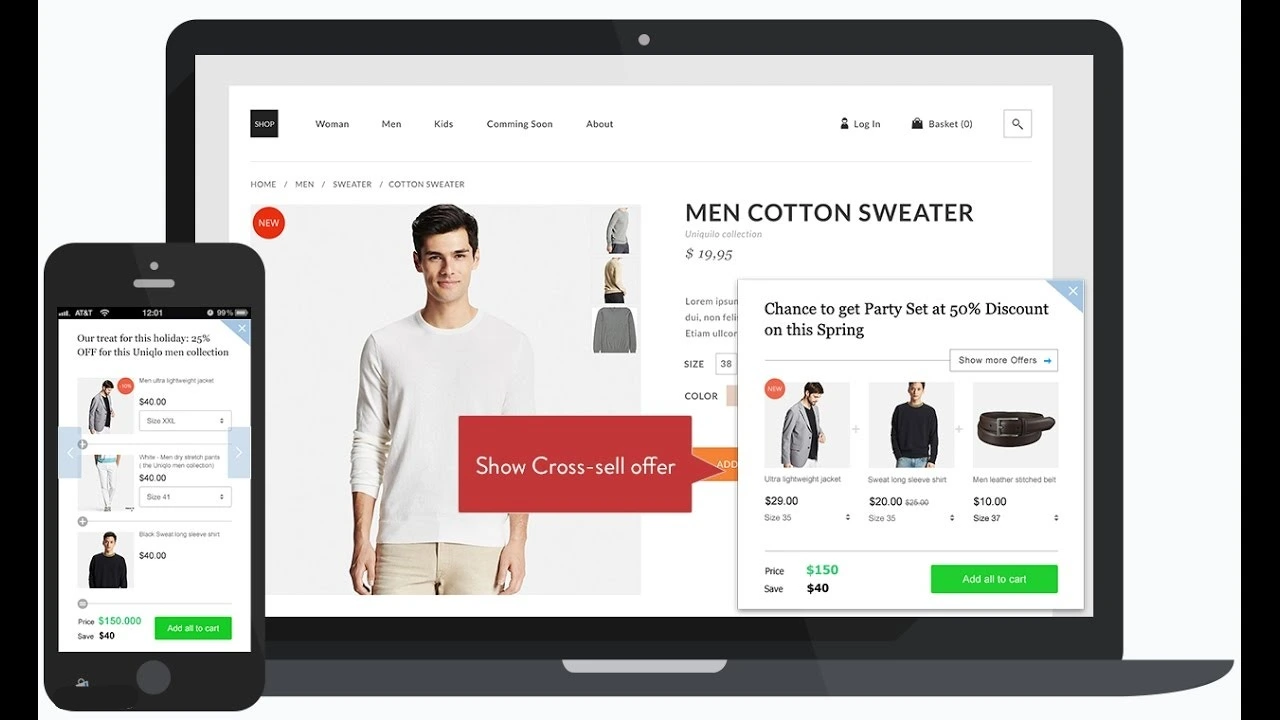In the fast-paced world of eCommerce, visuals are everything. Research shows that 30% of shoppers won’t purchase a product if images are missing or low quality, and 60% of Gen Zers will abandon a website that loads too slowly. This makes optimizing your Shopify store’s images a critical step in creating a seamless shopping experience.
In this comprehensive guide, we’ll cover everything you need to know about Shopify image sizes, including product images, banners, hero images, and more. We’ll also explore the best file formats, optimization tips, and tools to ensure your store looks professional and loads quickly. Let’s dive in!
Why Optimizing Shopify Image Sizes is Crucial in 2025
In 2025, the eCommerce landscape is more competitive than ever. With millions of online stores vying for customer attention, your Shopify store’s performance and visual appeal can make or break your success. Here’s why optimizing your Shopify image sizes is non-negotiable:
a. Faster Page Load Times
Large, unoptimized images can slow down your website, leading to higher bounce rates. Studies show that 53% of mobile users abandon sites that take longer than 3 seconds to load. Optimized images ensure your store loads quickly, keeping visitors engaged.
b. Improved Mobile Experience
With over 70% of eCommerce traffic coming from mobile devices, it’s essential to ensure your images look great on smaller screens. Properly sized images adapt seamlessly to different devices, enhancing the user experience.
c. Higher Conversion Rates
High-quality, well-optimized images build trust and encourage customers to make a purchase. A smooth shopping experience can boost your conversion rates significantly.
d. Better SEO Rankings
Search engines like Google prioritize fast-loading websites. Optimized images improve your site’s performance, helping you rank higher in search results.
e. Reduced Bandwidth Usage
Smaller image file sizes reduce bandwidth usage, lowering hosting costs and improving site performance.
Shopify Image Size Guidelines for 2025
Shopify allows you to upload images up to 4472 x 4472 pixels with a maximum file size of 20 MB. However, using the recommended dimensions ensures your images look sharp and load quickly. Here’s a breakdown of the most common Shopify image sizes:
| Image Type | Dimensions (px) | Aspect Ratio | |
|---|---|---|---|
| Product Image | 2048 x 2048 | 1:1 | |
| Collection Image | 1024 x 1024 | 1:1 | |
| Background Image | 1920 x 1080 | 16:9 | |
| Hero Image | 1920 x 1080 | 16:9 | |
| Slideshow Image | 1920 x 1080 | 16:9 | |
| Blog Post Image | 1920 x 1080 | 16:9 | |
| Logo Image | 250 x 250 | 1:1 |
Shopify Product Image Size
Choosing the right product image size for your Shopify store is crucial for maintaining a visually appealing storefront while ensuring fast page loading speeds. Incorrect image sizes can lead to slow performance, poor mobile responsiveness, and reduced conversions.
Recommended Shopify Product Image Sizes
Ideal Image Size
- 2048 x 2048 pixels (Recommended)
- Maintains high quality with zoom functionality
- Ensures a sharp, professional look on all devices
Minimum Image Size
- 800 x 800 pixels
- Allows zoom-in feature while keeping file sizes smaller
Maximum Image Size
- Shopify supports images up to 4472 x 4472 pixels
- However, larger images may slow down your site
Best Practices for Shopify Product Images
- Use Square Images: A 1:1 aspect ratio (e.g., 2048x2048px) keeps product images uniform across the store.
- Compress Images: Reduce file size with tools like TinyPNG or Shopify’s built-in image optimizer to improve page load speed.
- Optimize for Mobile: Ensure images are responsive and look great on all screen sizes.
- Use WebP Format: Shopify supports WebP, which offers better compression than JPEG or PNG, making pages load faster.
- Keep Backgrounds Clean: A white or transparent background enhances product visibility and maintains a professional look.
Shopify Collection Image Size
Collection images play a crucial role in Shopify stores by visually categorizing products, enhancing navigation, and improving the overall user experience. Choosing the right Shopify collection image size ensures your store looks professional, loads quickly, and adapts well to all devices.
Recommended Shopify Collection Image Size
🔹 Ideal Size: 2048 x 2048 pixels
- Ensures high resolution and crisp visuals
- Works best for zoom-in functionality
🔹 Minimum Size: 800 x 800 pixels
- Keeps image quality decent while reducing file size
🔹 Aspect Ratio: 1:1 (Square Images)
- Keeps collection images uniform across your store
- Prevents cropping issues on different screen sizes
Best Practices for Optimizing Shopify Collection Images
✅ Keep File Sizes Small: Compress images using tools like TinyPNG or Shopify’s built-in optimizer to speed up page load times.
✅ Use WebP Format: WebP offers better compression and quality compared to PNG or JPEG, ensuring faster load speeds.
✅ Maintain Consistency: Use the same image size for all collections to create a clean and professional layout.
✅ Test Mobile Responsiveness: Ensure your collection images look great on both desktop and mobile devices.
✅ Avoid Text on Images: Text may get cropped or become unreadable on different screen sizes. Instead, use Shopify’s text overlay features.
Shopify Background Image Size
A well-optimized Shopify background image enhances your store’s visual appeal and improves the user experience. Choosing the right size ensures that your background looks sharp across all devices without slowing down your site.
Recommended Shopify Background Image Size
🔹 Ideal Size: 1920 x 1080 pixels (Full HD)
- Provides a high-resolution background without excessive file size
- Works well for most screen sizes
🔹 Alternative Size: 2048 x 2048 pixels (Square format)
- Suitable for tiled or repeated background patterns
🔹 File Format: JPEG or WebP
- JPEG offers great quality with smaller file sizes
- WebP provides better compression and faster loading times
Best Practices for Shopify Background Images
✅ Optimize for Fast Loading: Compress images using tools like TinyPNG or Shopify’s built-in optimizer to prevent slow page speeds.
✅ Keep It Simple: Avoid overly busy backgrounds that can distract customers from products and text.
✅ Test on Multiple Devices: Ensure your background looks good on both desktops and mobile devices without cropping or distortion.
✅ Use CSS for Background Control: Instead of uploading large background images, consider using CSS to create subtle patterns or gradients for a faster and cleaner design.
✅ Check Contrast and Readability: Ensure text overlays remain readable against your background for a smooth user experience.
Shopify Hero Image Size
The hero image is the first thing visitors see on your Shopify store, making it crucial for creating a strong first impression. A well-optimized Shopify hero image enhances user experience, improves conversions, and ensures your store looks professional across all devices.
Recommended Shopify Hero Image Size
🔹 Ideal Size: 1800 x 1000 pixels (for most themes)
- Ensures a high-quality, full-width display
- Works well on both desktop and mobile
🔹 Alternative Size: 2500 x 1400 pixels (for ultra-high-resolution screens)
- Great for premium themes and retina displays
- Requires proper optimization to prevent slow load times
🔹 File Format: JPEG or WebP
- JPEG is recommended for fast loading
- WebP offers better compression with high quality
🔹 File Size: Under 300 KB
- Compress images using TinyPNG, Squoosh, or Shopify’s built-in tools to prevent slow loading
Best Practices for Shopify Hero Images
✅ Mobile Optimization: Ensure your hero image scales well on mobile. Use Shopify’s customization tools to preview and adjust accordingly.
✅ Keep Text Legible: If adding text overlays, make sure they contrast well with the background image for readability.
✅ Use Call-to-Actions (CTAs): Position CTAs strategically to drive engagement and conversions.
✅ Test Different Aspect Ratios: Some themes crop images differently—always preview how your hero image appears on different devices.
✅ Choose High-Quality Visuals: Use professional, high-resolution images to create an engaging storefront that reflects your brand.
Shopify Banner Image Size
Using the right Shopify banner image sizes ensures that your store looks professional and functions smoothly across all devices. Below are the most commonly used banner types along with their recommended dimensions.
Shopify Banner Types & Dimensions (Pixels)
| Banner Type | Recommended Size (px) | Best Use Case |
|---|---|---|
| Leaderboard | 728 x 90 | Header banners, navigation ads |
| Large Rectangle | 336 x 280 | Product promotions, featured sections |
| Medium Rectangle | 300 x 250 | Sidebars, in-content ads |
| Mobile Banner | 300 x 50 | Mobile-friendly promotions |
| Standard Banner | 468 x 60 | General website banners |
| Wide Skyscraper | 160 x 600 | Sidebar advertisements |
| Square | 250 x 250 | Small promotional banners |
| Small Square | 200 x 200 | Compact ad placements |
Best Practices for Shopify Banner Images
✅ Choose the Right Format – Use JPEG, PNG, or WebP for optimal quality and faster loading.
✅ Keep File Size Below 300 KB – Compress images using TinyPNG or Shopify’s built-in compressor.
✅ Ensure Mobile Compatibility – Check how banners appear on different screen sizes.
✅ Maintain a Clear Focus – Keep essential elements like text and logos centered to avoid cropping.
✅ Use a CTA (Call-to-Action) – Guide visitors to take action with buttons like “Shop Now” or “Learn More.”
Shopify Slideshow Image Size
Slideshows are a great way to showcase multiple products or promotions. Here’s how to optimize them:
Recommended Size: 1920 x 1080 pixels (16:9 aspect ratio).
File Size: Under 3 MB.
Example: Glowhub uses lifestyle photos in their slideshow to create a cohesive brand story.
Shopify Blog Image Size
Blog images enhance your content and make it more engaging. Here’s how to optimize them:
Recommended Size: 1920 x 1080 pixels (16:9 aspect ratio).
File Size: Under 3 MB.
Pro Tip: Avoid stretching small images, as this can make them look pixelated. Use high-quality images that fit your blog layout.
Shopify Logo Size
Your logo is a key part of your brand identity. Here’s how to ensure it looks great:
Recommended Size: 250 x 250 pixels (1:1 aspect ratio).
File Size: Under 1 MB.
Pro Tip: Use a transparent background (PNG format) for your logo to ensure it blends seamlessly with your site design.
Shopify Image File Formats
Choosing the right image file format is essential for optimizing your Shopify store’s speed, SEO, and overall performance. The right format ensures high-quality visuals while keeping file sizes manageable to improve page load times.
Common Shopify Image File Formats
JPEG (JPG)
- Best for: Product images, lifestyle shots, and banners
- Pros: Small file size with good quality, widely supported
- Cons: No transparency support, quality loss with compression
PNG
- Best for: Logos, graphics, and images requiring transparency
- Pros: High quality with transparent backgrounds
- Cons: Larger file sizes, which may slow page speed
WebP
- Best for: All images on Shopify (recommended)
- Pros: Superior compression with high quality, faster loading times
- Cons: Not supported by some older browsers
GIF
- Best for: Simple animations
- Pros: Supports animation, good for icons or small graphics
- Cons: Large file sizes, limited color range
Which Image Format Should You Use?
- Use JPEG for general product images to balance quality and performance.
- Use PNG for images that require transparency, such as logos.
- Use WebP whenever possible to maximize Shopify’s performance and SEO.
- Use GIF only when animations are necessary.
Final Tips for Optimizing Shopify Images
- Compress images using tools like TinyPNG or Shopify’s built-in compression.
- Use the correct dimensions to avoid unnecessary resizing.
- Test different formats to see which works best for your store’s design and speed.
How to Optimize Shopify Images
1. Choose the Right Image Format
Selecting the right format is the first step in optimizing your Shopify images. The three most commonly used image formats are:
- JPEG – Best for product photos and general images due to a balance of quality and file size.
- PNG – Ideal for images requiring transparency but results in larger file sizes.
- WebP – The most optimized format, offering better compression without quality loss.
Shopify supports WebP, which can significantly reduce file sizes and improve loading speed.
2. Compress Images Without Losing Quality
Large images slow down page speed, negatively impacting both user experience and SEO. Use compression tools to reduce file sizes while maintaining quality. Some recommended tools include:
- TinyPNG
- ImageOptim
- Shopify’s built-in image optimizer
- Online tools like ShortPixel or Kraken.io
Compression reduces the image file size without visible quality loss, making pages load faster.
3. Resize Images to Fit Shopify’s Recommended Dimensions
Uploading unnecessarily large images can slow down your store. Shopify automatically resizes images for different devices, but uploading optimized sizes prevents excess data usage. Here are the recommended dimensions:
- Product images: 2048 x 2048 px for high-quality zoom
- Thumbnails: 800 x 800 px
- Slideshow images: 1600 x 500 px for optimal display
Resizing before uploading ensures your images are not larger than necessary.
4. Use Descriptive File Names and Alt Text for SEO
Search engines rely on file names and alt text to understand image content. Use descriptive file names instead of generic ones like “IMG123.jpg.” For example:
- ❌ IMG001.jpg
- ✅ black-leather-handbag.jpg
Additionally, always include alt text (alternative text), which improves accessibility and SEO. Example:
- ✅ “Black leather handbag with gold zipper – perfect for travel and everyday use.”
This helps search engines rank your images in Google Image Search and enhances user experience.
5. Enable Lazy Loading for Faster Page Speed
Lazy loading ensures images load only when they are visible on the screen. This speeds up initial page loading and improves Shopify store performance. Shopify automatically supports lazy loading, but you can further optimize it using apps like Lazy Load by SEO Optimizer.
6. Use a Content Delivery Network (CDN)
Shopify uses a global CDN to deliver images quickly to visitors based on their location. This reduces loading times and improves performance. To maximize benefits, ensure your images are stored within Shopify’s CDN system rather than external hosting.
Conclusion
Optimizing your Shopify image sizes is a simple yet powerful way to enhance your store’s performance and user experience. By following the guidelines in this guide, you can ensure your images look stunning, load quickly, and drive conversions.
Ready to take your Shopify store to the next level? Start optimizing your images today and watch your sales soar!
Contact Us for Tailored Solutions – Stores Automation
Ready to transform your Shopify store and achieve big wins? Contact us at Stores Automation for personalized solutions that leverage the power of automation for your business. Reach out to us at 302-204-8244 or via email at info@storesautomation.com. For more information, visit our Sign Up page. Embark on the path to e-commerce success with Stores Automation – where small changes lead to big win.





